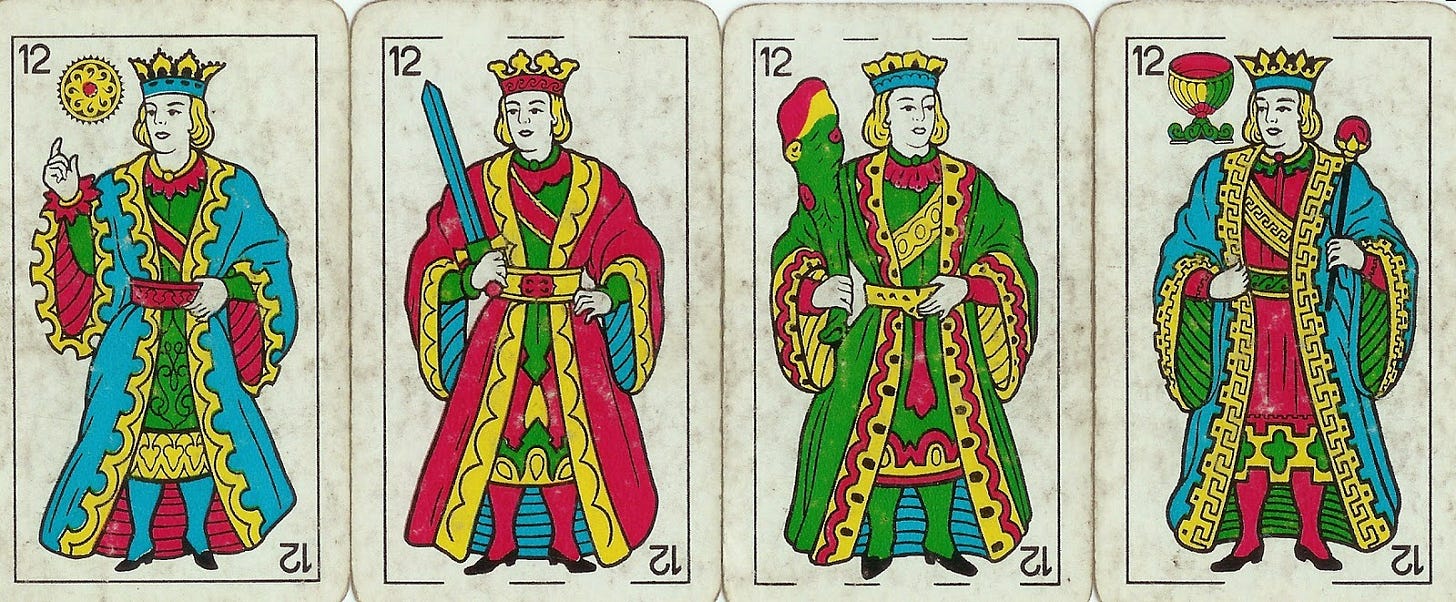Haftarah of Shabbos Chazon: Yeshayahu and the Four Kings
The dvar Torah I attempted to write for this week's parashah didn't come together as I envisioned. Instead, here's a short dvar Torah on the first pasuk of this week's haftarah. Enjoy!

Haftarah Shabbos Chazon: Yeshayahu and the Four Kings
This coming Shabbos is known as "Shabbos Chazon," and is named after the haftarah we will be reading. The haftarah is from the first perek of Sefer Yeshayahu, in which the navi bemoans the waywardness of the Jewish people which precipitated the destruction of the Beis ha'Mikdash.
Sefer Yeshayahu opens with a pasuk that establishes the timeline of the sefer:
The vision of Yeshayahu ben Amotz, which he saw concerning Yehudah and Yerushalayim, in the days of Uziyahu, Yosam, Achaz, and Yechizkiyahu, kings of Yehudah.
Yeshayahu's prophetic career lasted a whopping 86 years, spanning four consecutive kings. He received his first nevuah midway through the 52-year reign of Uziyahu. He continued prophesying through the 16-year reign of Uziyahu's son, Yosam, and through the 16-year reign of Yosam's son, Achaz. Yeshayahu's prophecies continued for the entire duration of the 29-year "Golden Age" reign of Chizkiyahu. His prophesying ceased with the ascent to the throne of the evil Menashe - Chizkiyahu's son, and Yeshayahu's grandson - who put Yeshayahu on trial for heresy and had him executed (see Yevamos 49a).
It is easy to dismiss this first pasuk as "historical background information" and to move on without analyzing it. Thankfully, the Radak stops us and expounds on the significance of this information. He writes:
[Yeshayahu] began his book with words of rebuke for the evil people of his generation. Even though it is written of Uziyahu that "he did what was proper in the eyes of Hashem" (Divrei ha'Yamim II 26:4) and similarly for Yosam, nevertheless it was stated about Uziyahu, "but as he became strong, his heart became haughty to the point of destruction" (ibid. 26:16), and during both of their reigns, the people offered sacrifices and incense on bamos (forbidden altars). And it is written in Divrei ha'Yamim regarding the reign of Yosam, "[He did what was proper in the eyes of Hashem, just as his father Uziyahu had done ...] but the people were still acting corruptly" (ibid. 27:1) - and all the more so during the reign of Achaz, who was evil, and who committed major atrocities, and in whose days the entire nation was evil, as it is written, "for they had forsaken Hashem, God of their fathers" (ibid. 28:6). Likewise, in the days of Chizkiyahu, the hearts [of the nation] were not whole with Hashem, as it is written in Divrei ha'Yamim.
The Radak is pointing out an interesting pattern here, which we can summarize in table-form:

The question is: What can we learn from this pattern? The Radak pointed this out to us for a reason - presumably, because it would help us to better understand the sefer. How so?
I can't say for sure what the Radak had in mind, but I can point out at least one observation: no matter how righteous the leaders were, their righteousness failed to bring about teshuvah in the nation. I don't know whether this reflects poorly on their leadership qualities, or on the degree of the nation's corruption, or both. Whatever the reason, the righteous kings had little impact on the righteousness of the nation. Even Chizkiyahu, whose righteousness is compared to that of David ha'Melech, who led a mass teshuvah movement - even his grand efforts did not succeed in eliminating the wickendness from the nation.
In light of the Radak, this introductory pasuk helps us to appreciate what Yeshayahu was up against. A navi is supposed to lead the nation in doing teshuvah. By listing the "national righteouness track records" of the four kings who reigned during Yeshayahu's prophetic career, the Radak calls attention to the difficult situation that the navi faced. By following the Radak's referneces to Divrei ha'Yamim II (and the parallel historical accounts in Sefer Melachim II), we can prepare for learning Sefer Yeshayahu by familiarizing ourselves with the state of the nation during this period of time. This will help us to better understand the methods and approach that Yeshayahu used to rebuke the people in his generation, and might help us to apply his teachings to our own generation.



